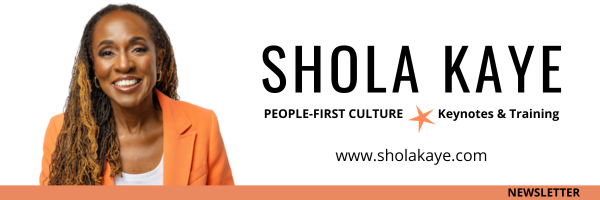How Can We Help?
Search for answers or browse our knowledge base.
December 2024 – Emotional Audacity: The Courage You Didn’t Know You Needed

Hi!
I hope you’ve had a restful holiday season and are looking towards the new year with enthusiasm.
On my way to Lisbon for Christmas break, I found myself thinking about my goals for 2025.
Goals and resolutions are often about metrics and routines: get up at 6 am five times per week, spend Y hours a day in productive activity, raise fees/increase income by X%, etc.
But as I sat on the plane and wondered what to write in my notebook, I realised these types of goals were less motivating than a deeper, more personal question:
Who do I want to BE in 2025?
This question led me to identify three key behaviours to focus on, and one stood out: emotional audacity.
The courage to be bold, vulnerable, and authentic in expressing emotions and creating space for others to do the same. It felt like a defining goal, and has been on my mind ever since.
I want to explore here how it can shape us all in profound ways.
LEADERSHIP: Why Leaders Need Emotional Audacity
Emotional audacity can transform the way we lead. Leaders often shy away from vulnerability, fearing it might make them appear weak. But in reality, showing emotions thoughtfully builds trust and fosters genuine connections with teams.
A leader who dares to say, “I’m struggling with this decision too” or “I appreciate your input more than I’ve said” invites collaboration and creates a culture of openness.
An emotionally audacious leader empowers teams to bring their full selves to the table.
This article explores the concept further: https://asana.com/resources/vulnerable-leadership
INCLUSION: Emotional Audacity as a Catalyst for Belonging
Inclusion thrives when people feel safe to express their emotions and experiences.
Emotional audacity means having the courage to ask the right questions and truly listen to the answers, even when they’re uncomfortable.
For example: “How does this policy impact you personally?” or “What’s one change I can make that will help you feel more included here?”
These questions signal that you value not just thoughts and ideas, but also feelings and lived experiences. You’re inviting others to be seen and heard—a powerful step toward fostering belonging.
This article discusses emotional inclusion https://www.psychologytoday.com/intl/blog/positively-different/202206/practice-emotional-inclusion-at-work-not-toxic-positivity
COMMUNICATION: Expressing and Inspiring Emotional Audacity
Authentic communication is the cornerstone of emotional audacity. It’s not about a one-way dump of your emotions on others; rather, finding a way to spark a mutually courageous exchange.
The right questions can open the door:
“How do you feel about that decision?”
“What do you like most and least about the new process?”
“Give me two specific ways I can support you right now. What impact will this support have on your ability to get things done?”
Here in Portugal, I booked a tennis lesson with a coach at a local club. The coach, Tiago, was all business. I tried to get him to open up by asking a few questions:
How long have you worked here? “18 years”
Is it cold for you at the moment? “Yes”
15 degrees was enough to get me in shorts and a vest, while he was in a hat, scarf and thick tracksuit!
The answers were polite but brief.
Then I asked “So what do you like the most about this tennis club?”
At this point, he smiled, paused and then leaned into the conversation. His expansive answer encompassed his feelings about the size of club, his wife (whom he met while coaching here), his young kids, his tennis mentor and more.
It turned into a fascinating, rather than perfunctory, conversation.
Most people have something interesting and valuable to share, we just need to ask the right questions.
Here are 70 thought-provoking questions. Use judiciously.
You might even want to answer a few of these yourself as an exercise in self-awareness!
https://www.spiritandmuse.com/spirit-muse-blog/70-thought-provoking-questions
How YOU Can Cultivate Emotional Audacity
- Reflect on your emotional habits: When do you hold back? What would it feel like to lean in?
- Practise intentional vulnerability: Share a small, personal truth with someone you trust, or even with a colleague or acquaintance. See what happens next.
- Ask courageous questions: Invite others into emotionally audacious conversations.
- Celebrate emotional risks: Acknowledge or thank others when they share their feelings with you.
A couple of books I’ve enjoyed recently and would recommend – if you care to delve deeper into expressing yourself fully and freely – are
Martha Beck’s “The Way of Integrity” and Dr Aziz Gazipura’s “Not Nice: Stop People Pleasing, Staying Silent, & Feeling Guilty… And Start Speaking Up, Saying No, Asking Boldly, And Unapologetically Being Yourself”
So… as we head into 2025, ask yourself: Who do I want to BE?
Is being emotionally audacious on your list?
Maybe there’s another set of behaviours and actions that are far more pressing.
I hope this will help you through the beginning of the year.
It means a lot to me that you’re reading this newsletter.
I’m sending heartfelt thanks for your interest, and wish you – and the world – a peaceful and joyful 2025.
Yours in audacity 🙂
Shola
Hi, I’m Shola and I help you create a people-first culture. My work sits at the intersection of Inclusion, Communication & Emotional Intelligence.
My keynote talks and workshops help your leaders and employees create high-performing work environments where people feel a sense of belonging and psychological safety. Sessions are high energy, interactive, and every participant walks away with at least one practical framework for connecting and collaborating more effectively.
Sound good to you? Please reach out and let’s discuss your next event! 🙂🎤✨
